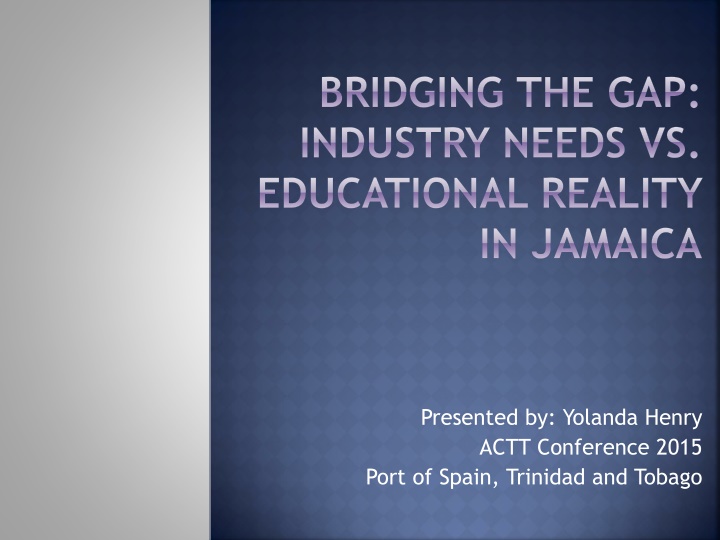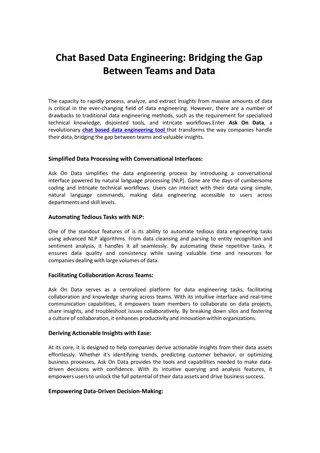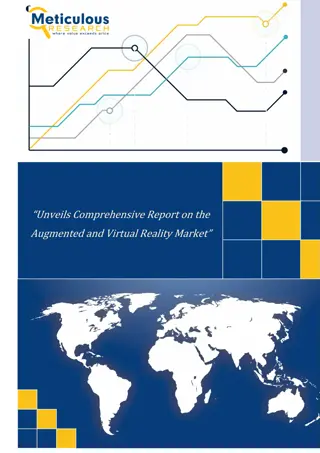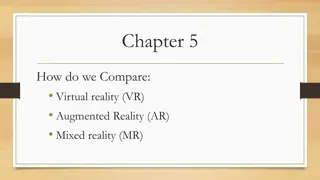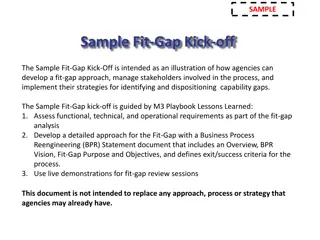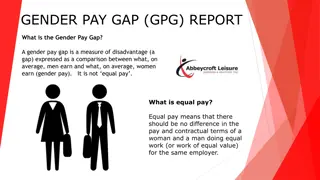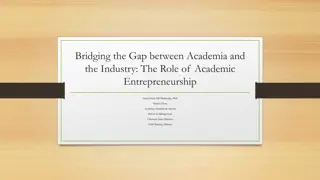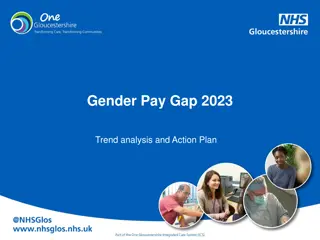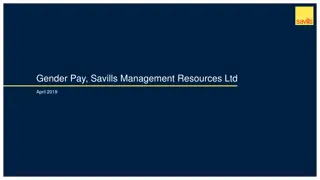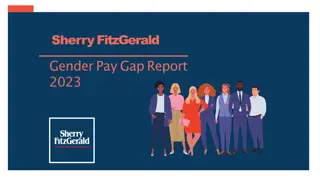Bridging the Gap: Industry Needs versus Educational Reality in Jamaica
Yolanda Henry presented a study at the ACTT Conference 2015 on aligning community college programs with the demands of the Jamaican job market. The research addresses issues of high unemployment, changing industry needs, and deficiencies in tertiary education to prepare students effectively for employment.
Download Presentation

Please find below an Image/Link to download the presentation.
The content on the website is provided AS IS for your information and personal use only. It may not be sold, licensed, or shared on other websites without obtaining consent from the author.If you encounter any issues during the download, it is possible that the publisher has removed the file from their server.
You are allowed to download the files provided on this website for personal or commercial use, subject to the condition that they are used lawfully. All files are the property of their respective owners.
The content on the website is provided AS IS for your information and personal use only. It may not be sold, licensed, or shared on other websites without obtaining consent from the author.
E N D
Presentation Transcript
BRIDGING THE GAP: INDUSTRY NEEDS VS. EDUCATIONAL REALITY IN JAMAICA Presented by: Yolanda Henry ACTT Conference 2015 Port of Spain, Trinidad and Tobago
CONTEXT OF RESEARCH High unemployment rate in Jamaica Constantly changing industry needs Employers difficulty in finding suitable candidates for available jobs Community college offerings vs. demand/needs of job market Need for students to be more discriminating consumers Deficiencies in tertiary education
PURPOSE OF RESEARCH This study was undertaken with the intention of comparing the extent to which the programmes being offered in community colleges reflect the needs/demands of the Jamaican job market.
MAP SHOWING LOCATION OF COMMUNITY COLLEGES IN JAMAICA
RESEARCH QUESTIONS The research was guided by the following research questions. What are the jobs that are in greatest demand within the Jamaica labour market? 1. To what extent do programme offered in community colleges reflect industry demands/needs? 2. What methods are employed by community colleges to test students readiness for the job market? 3.
METHODOLOGY Qualitative exploratory Primary and secondary sources Primary Sources Interviews conducted with lecturers and industry personnel Secondary Sources Industry reports, e.g., the Jamaica Labour Market Survey (JLMS) which is commissioned by the Ministry of Labour and published by HEART (Human Employment and Resource Training) provided information re jobs in demand Council of Community College (CCCJ) statistics and programme offerings brochures
LITERATURE REVIEW Job readiness what does it mean? skill sets that make graduates and other individuals adaptable to a given work environment (ACT, 2013) Employability skills demanded by employers Encompasses cognitive (technical) and non-cognitive (soft skills) (Conference Board of Canada). On the job training Skills required on the job versus skills acquired in the classroom
LITERATURE REVIEW Which is more important - college degree or work experience? Depends on who you ask Sadly, much of the literature in this area originates from North America. While it might be applicable, it cannot speak specifically to our context since there are many different variables that are unique to the Caribbean.
DEMANDS IN THE JAMAICAN JOB MARKET Skills/Occupational Areas in Demand in the Jamaica Labour Market in 2014 Skills/Jobs in Demand 2% 7% 9% 28% Services Agriculture 10% Tourism ICT Creative 11% 11% Manufacturing Construction 11% 11% Health Education
STUDENT ENROLMENT IN PROGRAMMES FOR YEAR 2014/2015 AT ONE COMMUNITY COLLEGE 25 22.7 21.6 20 16.9 Enrolment Percentages 15 11 10.7 9.6 10 5 3.9 3.6 0 Bus. & Entrep Liberal Arts Engin. & BuiltEnvir. Nat. Studies Comp. Studies Perform Arts Lib. Tech. Ed. THEM Areas of Study
DEMANDS VS. PROGRAMME OFFERINGS The difference/disconnect between demands of job market and college programmes is not as great as is generally perceived
DEMANDS VS. PROGRAMME OFFERINGS Ranking Jobs Programmes of Study 1st Services Tourism 2nd Agriculture Business & Entrepreneurship 3rd Tourism Liberal Arts 4th ICT Engineering and Built Environment 5th Creative Natural Sciences 6th Manufacturing Computer 7th construction Performing Arts 8th Health Library Studies 9th Education
FINDINGS Major challenges in students preparation include: Outdated or watered down syllabi Shortness of time to complete syllabi - students have to be prepared to work in pressure cookers Non- alignment of course outlines to what is happening in the world of work Lack of basic readiness among graduates Students mediocrity okay with being ok Financial constraints faced by some colleges Rapidly and ever changing work environment
MAJOR WEAKNESSES OF STUDENTS Inability to think logically Inability to think outside of the box Inability to problem solve Lack of persistence Inability to integrate knowledge for example, students find it difficult to transfer concepts linking Computerized Accounting and Mathematics Lack of professionalism
MAJOR WEAKNESSES OF STUDENTS Lack of initiative Lack of motivation greatest motivation seems to be money but students are not willing to invest enough time and effort to acquire it Lack soft skills don t know how to relate to each other problems with attitude, body language, speech, and gestures
STUDENTS STRENGTHS Willingness to learn and try new things openness to discovery learning Being trainable - adapt to changes quickly Flexibility Exposure to and expertise with regard to technology
STRATEGIES TO IMPROVE STUDENT READINESS Lecturers need more exposure to the workforce Reduce reliance on past papers and theoretical exam questions increase industry tasks Insistence on the things required in the work environment, for example, dress codes and use of Standard English. More intense work experience and social outreach Creation of work environment in the classroom
STRATEGIES TO IMPROVE STUDENT READINESS More internship, work experience or field work ensure that on the job training relate to student s area of specialization Apprenticeship learn in the environment Enhanced professionalism Extend delivery time for some courses
STRATEGIES TO IMPROVE STUDENT READINESS Develop competency standards in programme and let areas of specialization be assessed based on competency standard rather than a general exam, then decide whether dual certification should be given example of competency standards developed by the HEART Trust/NTA were mentioned
SKILLS SOUGHT BY EMPLOYERS Training in required area Time management skills Ability to listen well Being customer oriented Good interpersonal/people skills Creativity Commitment flexibility willingness to learn and take on new challenges analytical thinking
CONCLUSION Dichotomy between the demands/needs of the job market and the programmes offered by tertiary institutions is not as great as is often perceived. Many challenges affect the readiness of graduates for the world of work. The job market will continue to change and expand and community colleges must change with it if they are to remain relevant.
RECOMMENDATIONS More engagement with industry - Industry persons need to more actively engaged in curricula development, specifically as it relates to content and delivery Revamping of some of the current programmes that do not present future prospects for jobs and align them with areas of future and present demand
RECOMMENDATIONS Career guidance and counselling More frequent review of curricula to make adjustments for changing industry trends Transform classrooms into work settings Mentorship, increased work experience and social outreach/volunteerism
REFERENCES ACT. (2013). Work readiness standards and benchmark: The Key to Differentiating America s Workforce and Regaining Global Competitiveness retrieved from http://www.act.org/research/policymakers/pdf/ Work- Readiness-Standards-and- Benchmarks.pdf Adamson, Cebert. (2012, February 12). The role of Jamaican community colleges in economic recovery. The Sunday Gleaner retrieved from .jamaica-gleaner.com/gleaner/20120212/ business/business72.php Chen, Grace. (n.d.). Benefits of internship for community college students. Community College Review
REFERENCES Conference Board of Canada. (n.d.). Employability skills 2000+ retrieved from ww.conferenceboard.ca/Libraries/ EDUC_PUBLIC/esp2000.sflb Council of Community Colleges of Jamaica (CCCJ). (2013). Student handbook: Associate and bachelors of science degree in business studies. Kingston: CCCJ Council of Community Colleges of Jamaica (CCCJ). (2014). Programme Brochure: Kingston. CCCJ
REFERENCES Ferris State University. (n.d.). Internship Benefits For students retrieved from http://www.ferris.edu/business/internsh ip-benefits) Fischer, K. (2013). The employment mismatch. Chronicle of Higher Education Ha, John (n.d.) Education vs. experience: The debate. retrieved from http://www.reliable plant.com/Read/11307/education-vs- experience) HEART Trust. (2014). Labour market survey. Kingston: HEART Trust
REFERENCES Leong, R. & Kavanagh, M. (2013). A work integrated learning (WIL) framework to develop graduate skills and attributes in an Australian university s accounting program. Asia pacific journal of Cooperative Education, 14(1), 1-14 Lowden, K., Hall, S., & Lewin J. (2011). Employees perception of the employability skills graduates: SCRE Centre and Edge Foundation. University of Glasgow Noteboom, Ben. (2013). Making labour market inclusive retrieved from http://www.oecd.org/ employment/making-labour-markets- inclusive.htm of new
REFERENCES OECD. (2012). OECD 2012 report -Into the gap: exploring skills and mismatches retrieved from http://www.oecd.org/employment/into-the gap- exploring-skills-and-mismatches.htm Robbins, S. P., & Judge, T. A. (2011). Organizational behaviour (14th ed.). NJ: Prentice Hall.
REFERENCES Smith-Henry, D.V. (2011). Perceived readiness of Jamaica community college students for post college goals (Doctoral dissertation). University of Georgia World Economic Forum. (2015). Global Competiveness Index Report (GCI) 2014-2015 retrieved from www.weforum.org/ reports /global-competitiveness-report-2014- 2015
